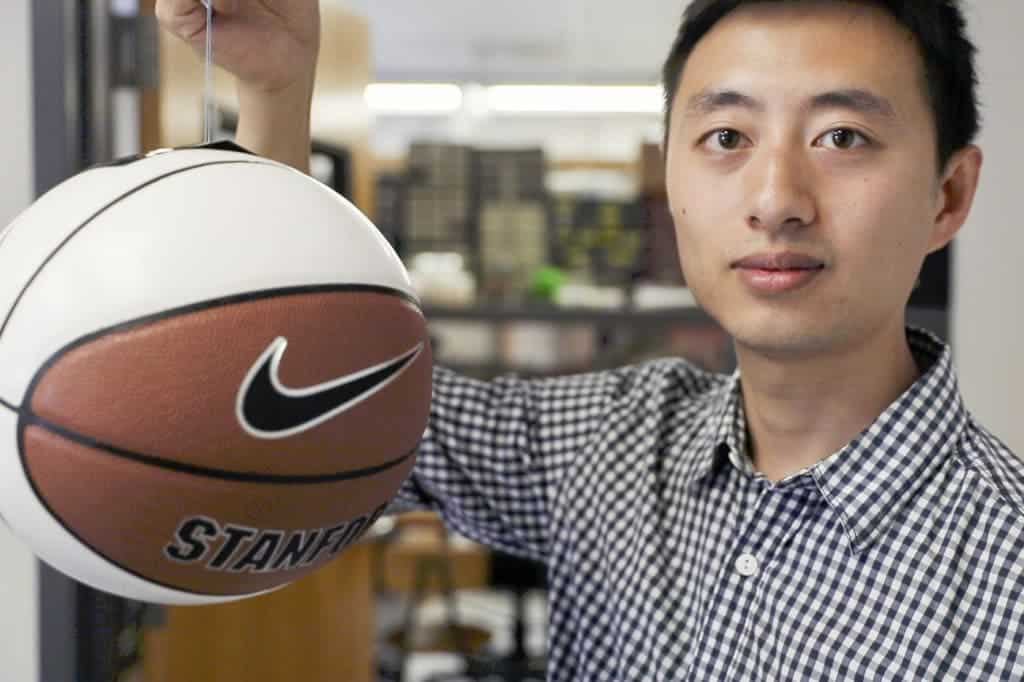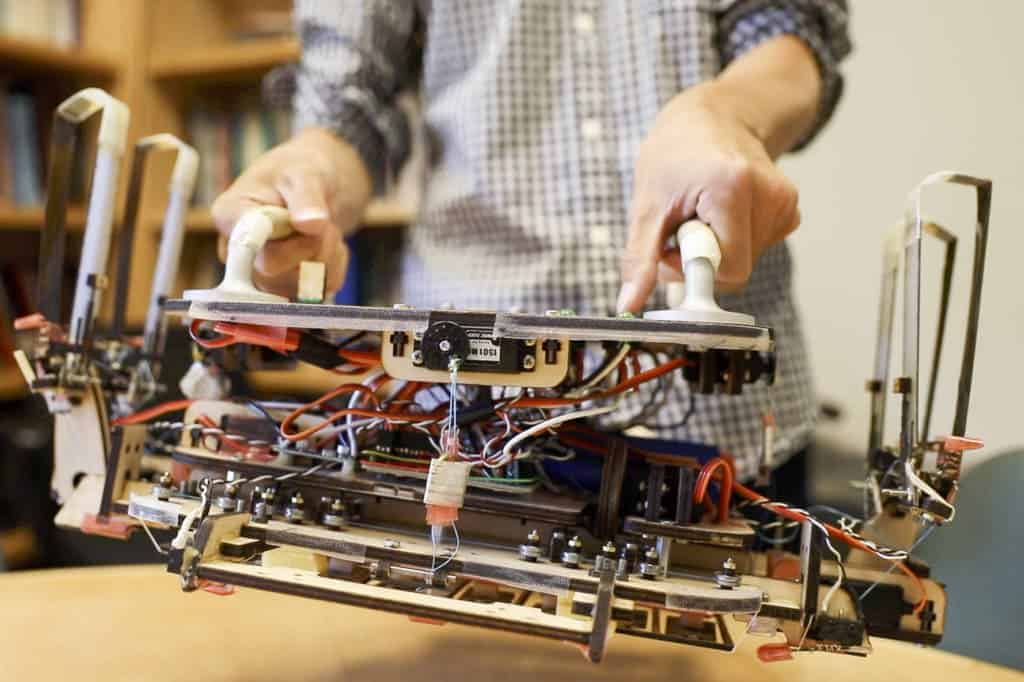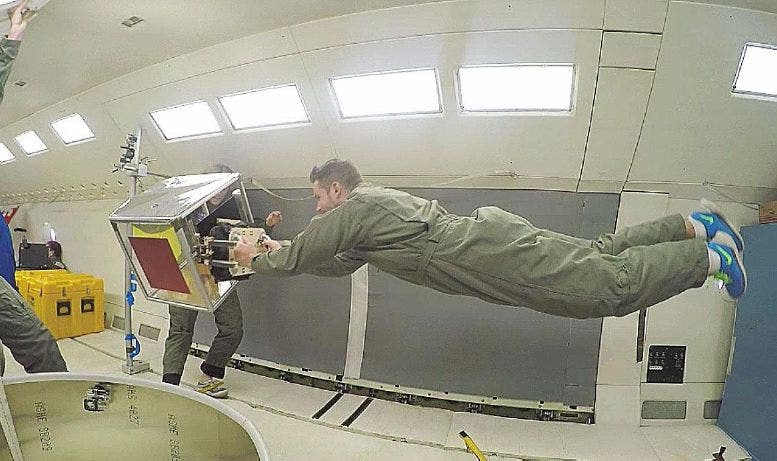
Stanford is experimenting with a new space-gripping technology that might rid the planet’s orbit of the millions and millions of debris collectively known as ‘space junk’. Though tiny, the debris travel at phenomenal relative velocities and any impact with a satellite or even a manned space station can spell disaster. The researchers were inspired by the gecko’s sticky pads to make sticky patches on a mechanical gripper which might one day be deployed on a ‘janitor’ spacecraft.
Cleanup on aisle five
Many of the things that work on Earth don’t work in space. You can’t, for instance, use suction or chemical adhesion (glue) to collect junk because of the vacuum. You can’t use magnets either because there’s a lot of space junk that’s made of glass or aluminum, though ESA is proposing using powerful magnetic beams to dislodge from orbit satellite fitted ‘magnetorquers’. The bottom line is that space physics is tricky, something which we all wish someone had told the nimrods who supervised the unconscionable dumping of all that junk into space.
In 1996, a French satellite was hit and damaged by the debris caused by some other French rocket which exploded a decade earlier. Yes, some people still think it’s actually a good idea to blow up stuff in the space. In 2007, for instance, China destroyed one of its old weather satellites with a missile causing 3,000 pieces of debris. Now, there are at least 170 million pieces of debris which range from 1cm to a few meters in diameter, all of which whizz past at more than 17,500 mph.

What makes space junk even more problematic is that there’s no viable solution in sight. In 2012, Swiss scientists launched a pilot program called the CleanSpace One which is basically a ‘space janitor’. The function of the satellite is to track and offset debris so that their trajectory puts them on a collision course with Earth’s atmosphere. Japan has a mission called Kounotori 6 which can tether space junk with electromagnetic forces. Astroscale, a Japanese startup, plans is to launch a satellite called ELSA-1 that will track debris and stick to it with glue. Other ideas are even wilder, like using lasers to vaporize the surfaces of small pieces and force them down. But all of these have either failed or are in the making.
But maybe a ‘space gecko’ will pull it off after all.
“What we’ve developed is a gripper that uses gecko-inspired adhesives,” said Mark Cutkosky, professor of mechanical engineering and senior author of the paper. “It’s an outgrowth of work we started about 10 years ago on climbing robots that used adhesives inspired by how geckos stick to walls.”

A sticky problem
Stanford’s Cutkosky and colleagues think they can collect and eventually destroy space junk by gripping them with a robotic arm with a sticky touch. Gecko toes can stick to virtually any surface, not because of some glue of some sort, but rather thanks to Van der Waals forces — a. form of attraction which only works between the positive and negative charges of individual molecules that are within a few nanometers of one another.
At the center of the gecko’s Spider-Man-like clinging ability are its specialized pads, located on the reptile’s toes, comprised of various satae (bristle- or hair-like structures ) on the tip of which lie tiny structures called spatulae, each less than a micron wide. These allow attractive forces to arise between the adhesive setae and the surface.These forces are so strong that they not only allow for supporting the gecko’s weight but for even a highly robust human as well – up to 133 kg can be sustained by the adherence forces between the gecko’s toes and a surface. This feature was extensively studied when a robot which mimicked the gecko’s satae was built and successfully tested out.

The gripper adhesive might not be as intricate as a gecko’s foot but it works in much the same way as tests showed at JPL in Pasadena, Calif. but also in zero-G on NASA’s reduced-gravity airplane. Like a gecko’s foot, it is only sticky if the flaps are pushed in a specific direction but making it stick only requires a light push in the right direction. This is a helpful feature for the kinds of tasks a space gripper would perform.
Some of the gripped test objects weighed as much as 800 pounds, as described in the journal Science Robotics. Essentially, the gripper can grab both flat and round objects with a mere gentle tap and release these objects with the push of a button. It’s exactly this sort of feature that might prove essential to tackling space junk which often spin or move erratically, and their surfaces can be relatively smooth and hard to grasp.
“Only when you load it in a certain direction does it suddenly adhere, and when you relax that force it comes right off,” Cutkosky told CNN Tech. “That really is the secret to it.”
“If I came in and tried to push a pressure-sensitive adhesive onto a floating object, it would drift away,” said Elliot Hawkes, MS ‘11, PhD ‘15, a visiting assistant professor from the University of California, Santa Barbara and co-author of the paper. “Instead, I can touch the adhesive pads very gently to a floating object, squeeze the pads toward each other so that they’re locked and then I’m able to move the object around.”

Now, the team hopes to finally set their gripper in a live environment, in space. But first, they need to retrofit their current prototype to match the challenges of space, like inhumanly cold temperatures. If all works as planned, the team envisions two types of grippers getting deployed in orbit. One would a be a 2,000-pound satellite that sweeps its orbit grabbing and relocating debris so they burn up in the atmosphere while another option is a tiny satellite no heavier than a few pounds that would clean debris one piece of junk at a time. The latter option would be cheaper to build and fly — a swarm of such objects could be deployed, though there’s a risk these too could become space junk if we’re not careful.
Beyond space junk, a gripping robotic arm could be useful aboard the International Space Station too. Many dangerous missions which require astronauts taking space walks could be superseded by a geck-like arm.
“The other area of interest is to have small robots that could climb around the outside of a space station or other structure without floating off because they stick using these adhesives. That would be to do inspection or maintenance,” Cutkosky said.


